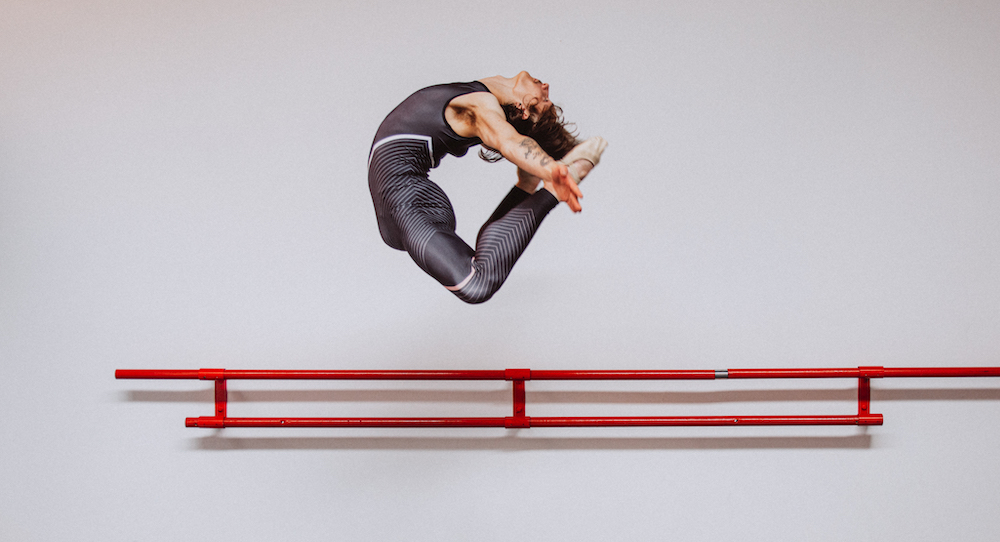In the captivating world of dance, our journey towards mastery often mirrors the great feats of aviation pioneers. Picture yourself in the shoes of Santos-Dumont or the Wright brothers, facing the monumental challenge of crafting vessels “lighter than air” capable of soaring amidst the clouds. Their breakthroughs revolutionised human flight, shaping the way we traverse the globe today. But what does this historic analogy reveal about the pursuit of excellence in dance?
Join Dance Informa and Zac Jones from Heal Yourself and Move in our fourth Beyond Stretching column as we delve deeper into the intricate relationship between ‘strength and technique,’ exploring how to cultivate a body that feels as light as air, effortlessly gliding through each movement with grace and precision. In our quest for perfection, it’s crucial to recognise that traditional approaches to conditioning often fall short, burdening the body with unnecessary density and hindering the very essence of dance — the ability to transcend gravity and achieve a sense of weightlessness.

Jones challenges us to consider this: “In a world where ‘no pain, no gain’ reigns supreme, we must rethink our approach to training. Intensity breeds density, and dense muscles anchor us to the ground when what we seek is to ascend gracefully. We must adopt a method lighter than air, one that doesn’t weigh down our aspirations but rather lifts them to new heights.”
Just as every component of an aircraft must be lighter than air, so too must our conditioning regimen match the demands of our art. Jones notes, “Whether you’re a dancer, an athlete, or a martial artist, achieving peak performance requires a blend of precision, effortlessness and power.”
He adds, “It’s not about mindless repetition or bulking up; it’s about selecting the right tools for the job. We need exercises that activate our muscles and neuromuscular pathways in harmony, preparing us for that moment of execution when every movement feels effortless.”
So, let’s bridge the gap between effort and execution. Let’s empower ourselves with the refined tools necessary to soar — physically, mentally and artistically.
Imagine executing a perfect grand jeté or an effortless port de bras. These feats require not just raw strength but a strength that feels as light as air, ensuring each movement soars unhindered.
Let’s explore some practical exercises designed to enhance both strength and technique while maintaining a sense of effortless grace:
#1. Pliés with resistance bands
Start by incorporating resistance bands into your plié exercises. As you lower into the plié position, become aware of tension by gently placing a hand on your quad – the first sign of resistance. Then, relax or release tension and follow the pathway of release rather than pushing through the pathway of tension.
To come up, observe the engagement of muscles from the pull of the band, and once again follow the pathway caused by the release of tension in your leg as you imagine lifting upwards against the resistance of the band. This will not only strengthen your leg muscles but also promote a sense of upward lift, and adaptability, enhancing your ability to achieve height and lightness in jumps and leaps.
#2. Pilates reformer work
Pilates offers a wealth of exercises that focus on building strength while maintaining alignment and control. Incorporating Pilates reformer work into your conditioning routine can help develop the deep stabilizing muscles necessary for maintaining balance and control in intricate dance movements. Engaging with the true dynamic pressure of the springs and letting them guide the rhythm of execution on the reformer exercises such as leg circles, footwork and the ‘hundred’ can all contribute to building strength while promoting a sense of lightness and fluidity in your movements.
#3. Balance and stability drills
Balance and stability are essential components of light and fluid movement. Incorporate balance exercises such as single-leg balances, relevés, and arabesque balances into your routine to improve proprioception and control. By manually activating muscles with targeted touch on the focus areas of the core muscles and observing and releasing tension to initiate and sustain movement, you will enable a naturally lifted posture while cultivating a sense of lightness and poise.
#4. Plyometric training

Plyometric exercises, such as squat jumps, box jumps and plyometric push-ups, can help improve explosive power and dynamic strength. By incorporating plyometric training into your regimen, you’ll develop the explosive strength necessary for powerful jumps and leaps while maintaining a sense of fluidity and ease in your movements. As a tip to facilitate this power, try emptying all tension from external muscles and joints, particularly feet and then imagine you are bouncing off a trampoline to facilitate the jump.
#5. Mindful movement practices
Finally, remember that achieving lightness in dance is as much about mindset as it is about physical conditioning. Incorporate mindful movement practices such as yoga, tai chi, Feldenkrais, or Heal Yourself and Move into your routine to cultivate body awareness, breath control and a sense of ease in movement. By developing a deeper connection between mind and body, you’ll enhance your ability to move with grace and precision, effortlessly soaring through space with each step.
The pursuit of lightness in dance is a multi-faceted journey that requires a balanced approach to strength, technique and mindset. By incorporating practical exercises that focus on building strength while maintaining a sense of ease and fluidity, you’ll unlock new levels of artistry and expression in your dancing.
Head to the Heal Yourself and Move Facebook group, where you can learn how to get lighter than air in your training with live workshops each week on key flexibility, strength and technique topics: www.facebook.com/groups/healyourselfmove.
By Renata Ogayar of Dance Informa.

















